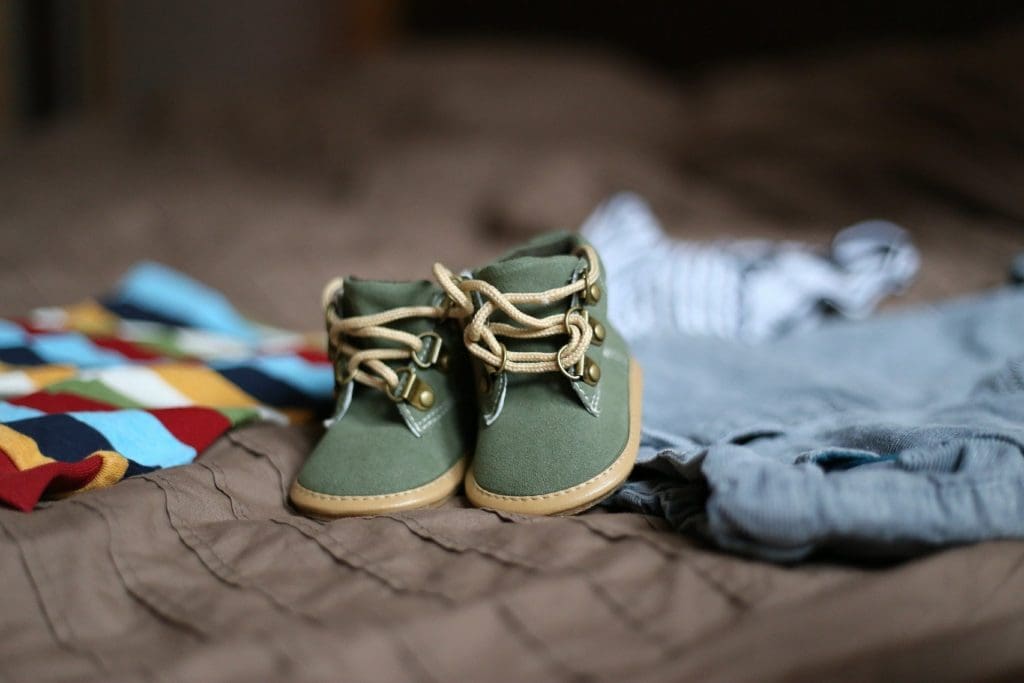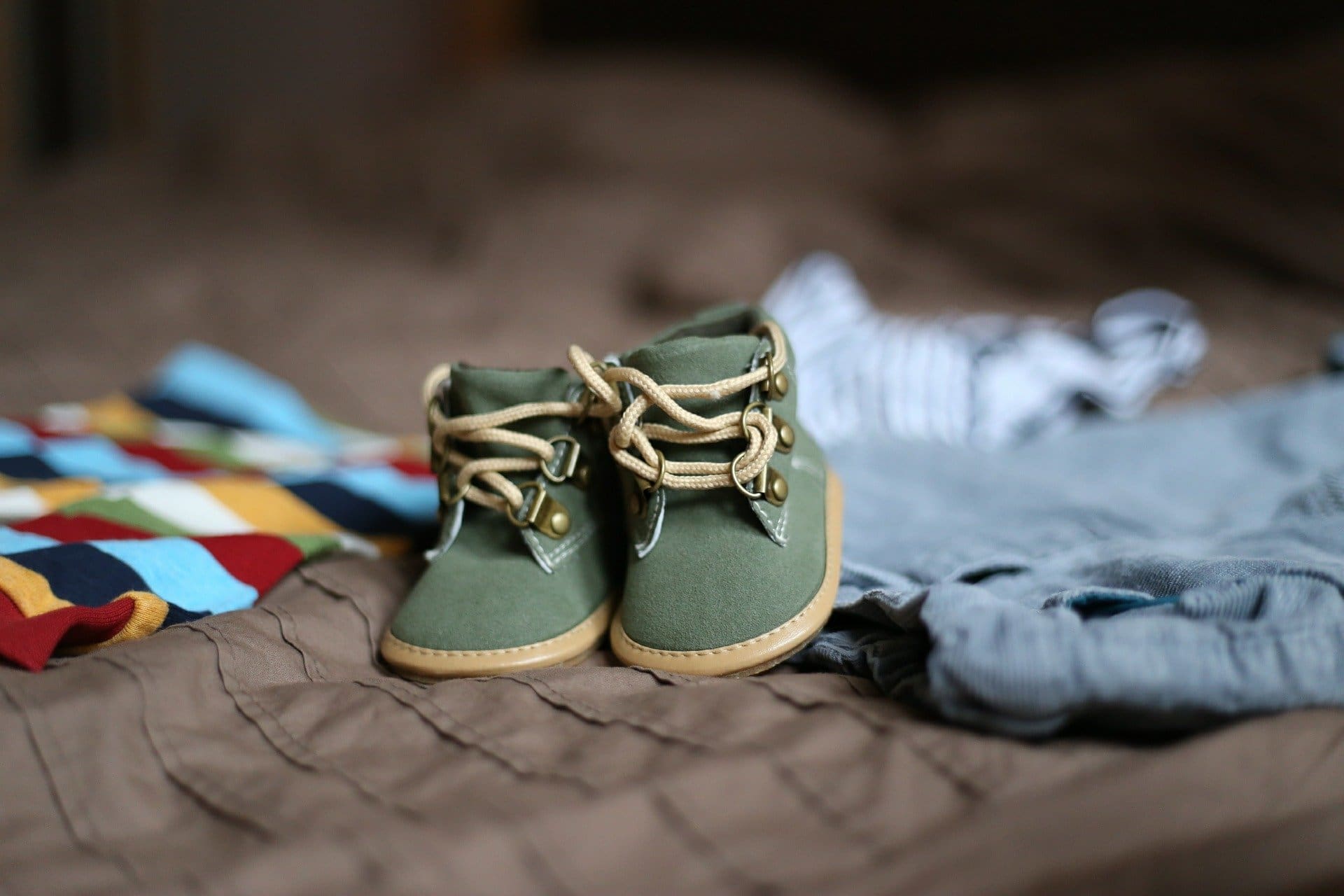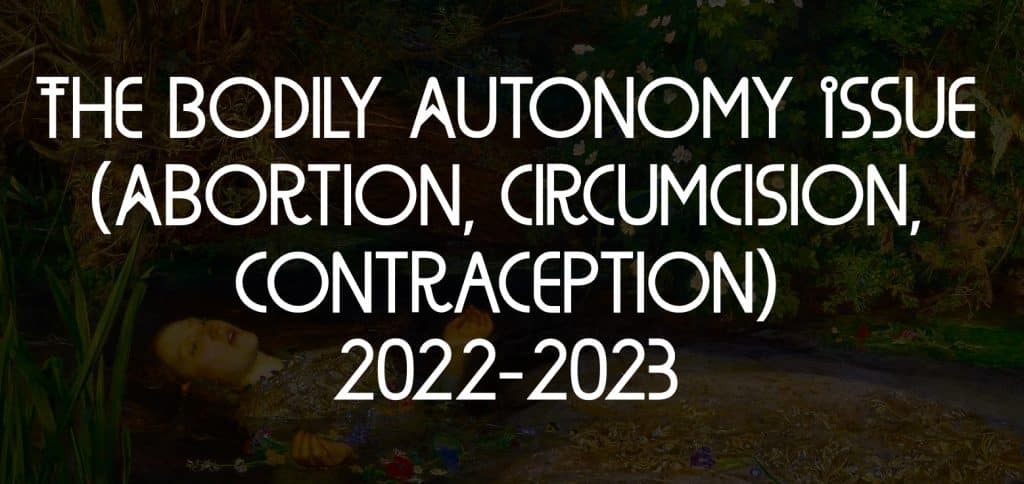“Bodily Autonomy: A Fetus for a Fetus” explores the cultural issues of what it means to be a woman, and how these expectations surrounding our fertility limit and even exploit our personhood. My story shows the disconnect between a spoken standard that is supposed to embrace “all life” and the hypocrisy that our society betrays women at all stages of our reproductive lives.
AUTHOR’S MEMO
Chances are someone you know has had an abortion. According to the Guttmacher Institute, a non-profit reproductive health organization, one in four women in the United States have had this procedure by age 45 (Wind, 2017).
I am one.
“A Fetus for a Fetus,” is a braided narrative about how the complex experience of a previous abortion complicated the author’s emotional recovery from a second trimester miscarriage later in adulthood. This piece draws on vivid sensory details in the scenes during the abortion procedure without anesthetic, and the visceral details of the process of birthing a second trimester fetus at home. There is a definite thread of retribution and penitence between the two experiences.
I was 22 at the time of my abortion, I am 60 years old now, well past my childbearing years, and although the abortion was almost four decades ago, the unpleasant memories are easily triggered by current affairs. The most recent one, of course, is the Supreme Court ruling on Dobbs v. Jackson Women’s Health Organization, written by Justice Samuel Alito, which gives states the right to govern access; 26 states were poised to restrict access to abortion and 14 were ready to ban all abortions the minute the final ruling was issued, and they did.
The Republican timeline demonstrates a persistent chipping away since January 1973 when Roe gave women autonomy over our own bodies and protected the right to choose. I remember seeing Gloria Steinem and Betty Friedan on the news when I was eleven years old protesting and campaigning for these rights. When the courts blocked the conservative challenges and the appeals were lost, pro-life supporters resorted to violence blowing up clinics, attacking or murdering providers, and harassing women with their picket lines and blockades. “A Fetus For a Fetus,” describes what those picket lines were really like.
All this conservative intimidation was used not only to change laws and restrict access, but also to silence the women who have exercised their choice, one preserved in our Constitution for nearly 50 years. Our stories are not exactly hidden, but shunned, so even we repress them. But even these stories, maybe even especially these stories, are important to share in order to see the full perspective around this issue.
All this conservative intimidation was used not only to change laws and restrict access, but also to silence the women who have exercised their choice, one preserved in our Constitution for nearly 50 years. Our stories are not exactly hidden, but shunned, so even we repress them. But even these stories, maybe even especially these stories, are important to share in order to see the full perspective around this issue.
This work explores the cultural issues of what it means to be a woman, and how these expectations surrounding our fertility limit and even exploit our personhood. Sections address how the protagonist even began to punish herself based on a religious upbringing, despite how the decision to abort was truly the best one at the time.
I also attempt to address the societal divide of how a “pro-life” culture does not offer any mourning or grief rituals when a wished for pregnancy ends. My story shows the disconnect between a spoken standard that is supposed to embrace “all life” and the hypocrisy that our society betrays women at all stages of our reproductive lives.
In addition, “A Fetus for a Fetus” addresses the patriarchal conditions set in and around reproductive health, which lets the male sperm partner off the hook for responsibility from the immediate and lasting consequences of an unwanted pregnancy. I do this by braiding in the story details of how my partner, in fact, had already been responsible for a previous abortion in his teens, but was unwilling to assume a more leading role in birth control and contraception.
Finally, a perfect stranger helps the narrator reach a place of atonement and understanding, teaching her that women never forget their pregnancies, no matter the outcome: live birth, miscarriage, stillbirth, neonatal death, adoption, and yes— even abortion. Our autonomy over our own bodies and the decision when and if to become mothers should remain with women themselves.

A Fetus for a Fetus
Sometimes the heart remembers before the mind. Even after all these years, it’s the dreary days of winter that can activate the memories the most. They start with a melancholy overcast that drizzles over me like the mist coming down from the freezing gray as I take the dog for his morning walk. Then, later, the mind adds the information to justify the sudden sadness. Winter was when Gideon should have been born.
I made it through the tricky part, the place where the other two pregnancies ended, and was well into the second trimester. A model patient, I didn’t smoke or drink, exercised moderately, and even stopped all caffeine. That feeling of powerlessness all floods back with the reminder of a promise betrayed that if you worked hard, made best choices given the circumstances, life would go as planned. Gideon taught me that it wouldn’t always be so.
I didn’t even want a boy.
I only wanted to have girls. According to my mother, girls were more trouble, talked too much, were never satisfied with what they were given, and were less smart and more smart-alecky. I disliked boys because my four brothers always rated higher with my mother. Even though I got better grades, didn’t do drugs, and was never suspended from school or arrested; I was not equal simply by gender.
So, boys, even baby ones, didn’t appeal to me until I saw Gideon hanging by his umbilical cord between my legs.
I was eighteen weeks pregnant on that hot August night when the miscarriage finally happened. In response to minor spotting my midwife had prescribed bed rest two weeks before, and I reluctantly complied. My daughters were two and five at the time, so arranging childcare to do this was difficult. On the third day when conditions were unchanged, the midwife made a house call and searched my swollen belly for the fetal heartbeat that was so strong and steady at the last appointment, but found none. All I heard was the incessant static which made my eyes well up with tears. After twenty minutes or so she gave up. “It doesn’t look good.” An ultrasound, performed by an independent radiologist, confirmed the demise.
It was a creepy feeling carrying around a dead baby. Given the emotional upheaval after seven days or so, we decided to seek help at the nearby women’s hospital. My idea was they could perform a D & C and I could move past this, just like my first miscarriage. I was met, however, with skepticism and insult. Phrases like “little to no prenatal care,” and “patient claims she is seventeen weeks pregnant” were used. No tests were given, no scans, not even a fetal heartbeat was taken. In the early 1990’s, midwives were considered a low-care option, but more importantly were a financial threat to the obstetricians. Liability lawsuit was written all over their faces and I was sent home.
When I still hadn’t miscarried by day eleven, we induced labor with herbs. I awoke the next morning with mild contractions, and I went about the day, but by 11:00, I knew things were progressing and called my husband and the midwife. As soon as my husband arrived, my water broke. This startled me. My two previous early miscarriages were more of a heavy period, nothing like this. By 12:30, I felt I needed to use the bathroom and as I sat on the toilet riding out a strong contraction, I felt the relief of something passing, but heard no splash.
When I finally looked down, I saw a little body about six-inches long hanging by the umbilical cord, retained by the placenta which refused to birth. I cupped it in my hands and studied the small thing, and discovered it was a boy. I held him like this until the midwives arrived.
After the delivery and when we were alone, I took the baby out of the bowl the midwives had placed him in. I held him and cut the cord, separating him from the placenta, then I cleaned his body with a soft diaper and kissed his tiny head and called him Gideon, because that was the name we had already selected.
It belonged to him.
My husband held him and cried too. When I touched Gideon’s chin, I noticed how his little mouth opened and closed, but drew no breath; how his tiny fingers were perfectly formed, but would not clasp my finger. Late into the evening, I sat holding him, and noticed his right foot looked clubbed, but otherwise, he looked normal. I took photos, measured him, and then located a Wizard of Oz cookie tin, lined it with a clean soft diaper making it into a little casket. Carefully I placed him inside, and pressed the cover down with a whoosh.
We decided to bury him under a cedar tree on my brother-in-law’s property. My father-in-law had died a few years back and my husband kept a small amount of cremains. I desperately wanted someone to be with Gideon, so we placed them together before burial. Then we walked through the golden rod and selected the tree, cedar, because that was Dad’s favorite; cedar, because it was in the center and stood apart from the deciduous hardwoods encircling the pasture. Cedar, because it smelled good and provided shade. My husband dug the hole, while the girls played nearby catching bugs in their nets.
With this loss, and the grieving months that followed, it was difficult not to look back on the entire reproductive history as if to locate a reason, a justification for this kind of retribution. “Miscarriages just happen sometimes,” the midwife said. “There was nothing you did or didn’t do to cause this. It just wasn’t a strong pregnancy,” she tried to reassure.
I concluded the cause must be a spiritual debt. I didn’t have far to travel to guess what it was.
***
From childhood, females are schooled in protecting that all-important virginity, in assuming responsibly if we do have sex, and in being shamed when birth control fails. Clearly, it was my fault. Males don’t have to account for the whereabouts of their sperm, or carry the consequences of their misdirection. Boys will be boys.
I remembered crossing the picket line three rows deep at the Planned Parenthood that Saturday in January 1985, walking through protesters screaming obscenities at me, then siting in the hard orange plastic chairs next to a row of young women. I was over 10 weeks pregnant by then, even though I contacted the clinic at 7 1/2 weeks. I had to wait for the initial appointment, then schedule the mandatory counseling session, come up with $275.00 USD cash, and then make the appointment for the procedure (Henshaw, Forrest, & Van Vort, 1987).
A voice summoned me to the procedure room behind the metal doors; “Cathy, last initial ‘B.’ Cathy last initial ‘B.’” a nurse called out with an ironic gesture at privacy. Next, I was alone in the stainless steel room with nameless attendants, and a vacuum extractor sucking. The boyfriend waited in the room named for such things.
During the procedure, I had what the doctor called a “vasovagal reaction.” This is when there is a sudden drop in heart rate and blood pressure that leads to loss of consciousness. It is reaction to a stressful event. Abortion by vacuum extractor, with no anesthetic, meets the definition of a stressful event. Later, I learned other clinics offered twilight sleep.
Afterward we walked through the protester’s signs screaming at us, “Abortion is Murder;” “You will go to hell for what you have done here today.” Their voices were quiet now, and their stares were worse than when we first went inside. Woozy and barely conscious, I wobbled to the car.
I remember the OB/GYN I went to just months later, who reviewed my honest answers about previous pregnancy outcomes: number of births, miscarriages, or abortions, on the health history form, and when she reviewed the abortion stat told me, “This is a shame. Poor baby,” and she didn’t mean me. She said God loved all life. She reluctantly prescribed the birth control pills that would keep this from happening again because I wasn’t, after all, getting married, just sexually active for fun. Her disdain felt like a curse or evil omen. You don’t forget that, even decades later.
I, henceforth, admitted to six pregnancies, not seven, I have three children, two miscarriages, and Gideon—and a whisper of an abortion.
After Gideon’s miscarriage I thought, now I am even with God, now the karma is set straight. Surely, I reached some measure of atonement. This act of contrition was penitence enough.
An eye for any eye; a fetus for a fetus.
Funny, no one questions us when we want to get pregnant, why we decided the time was right to become a mother. There are no explanations required. Yet, when we choose to terminate a pregnancy, good reasons are mandatory, and never accepted.
Today, in some states because of the Supreme Court’s ruling, even in cases of rape or incest caused pregnancy, abortions will be criminal. Yet, the act of rape and incest is still a crime. At least for now.
There are those who will read this surprised by my decision, without regard to the reason I felt I had to make it. The sperm donor to the fetus was planting sperm elsewhere. They won’t understand his distaste for condoms even though I had serious side effects from the pill, and even though this was his second abortion. Or maybe this unintended pregnancy was the result of not using enough spermicide with the diaphragm. They won’t care I had no money, or a real job after graduating from college. How silly and young I was that I thought these things happened to other people. According to the Guttmacher Institute, these are the main reasons women make the choice to abort: unintended pregnancy, failed contraception, financial difficulties, and unstable relationships (Wind, 2017). Regardless, those who are inclined to judge will look at me with that, “I thought you were a nice person” expression and they will never speak to me again thinking that it serves me right:
A fetus for a fetus.
Maybe knowing I anguished over this decision, how I was driven into therapy guilt ridden having violated my own moral code by the Catholic-father-upbringing, might earn me some points. Maybe if they knew all of this they would soften their judgment. Consciously, I knew there wasn’t some mathematical correlation between the abortion and the miscarriage, still the religiosity told me otherwise. From childhood, females are schooled in protecting that all-important virginity, in assuming responsibly if we do have sex, and in being shamed when birth control fails. Clearly, it was my fault. Males don’t have to account for the whereabouts of their sperm, or carry the consequences of their misdirection. Boys will be boys.
For the record, even today, I feel like I made the right choice.
At the time, I grieved Gideon, I grew angry about our societal view on reproductive rights and the disconnect with human kindness. With all the pro-life dogma, there was little to no acknowledgement when a wished-for pregnancy terminates. There were no flowers, or condolence cards. There is just a “try again” attitude, plenty of sperm and egg to go around.
The person who comforted me the most was a complete stranger. A month after the miscarriage we held a yard sale. A small-framed woman about seventy-five years old noticed the girls jumping up and down on a chair directly in front of the window looking out at us.
She smiled, “What beautiful children. How many do you have?” This was an ordinary question and originally I would have known how to respond. I don’t know exactly why I answered the way I did, just that it seemed safe to be honest.
“I’m not sure how to answer that question anymore. I just had a second trimester miscarriage— a little boy.”
“Oh my dear,” she said, “I am so sorry.” And she shared her story with me, about how she too lost a son, almost at term when she gave birth, and the doctor didn’t want her to see him or hold him. She said it was like the world pretended he never happened. This was customary in those days. Her eyes glazed with tears as she told me about Michael and his christening gown and bonnet, and how she didn’t want me to think her strange but, she still keeps them in a wooden box hidden in the attic.
“I haven’t spoken about him in decades,” she patted my hand. “Enjoy them.” She said as she motioned her other hand at my daughters. “And don’t worry, you’ll always remember Gideon. Even when you are old like me.”
She was right. I understood, like all mothers do, no matter the final outcome, women do not forget their pregnancies, whether they culminate in a live baby, miscarriage, stillbirth, neo-natal death, adoption, or yes—even abortion. Each woman, not a few select zealots, must retain the right to choose when and if we want to be a mother.
Photo of baby shoes by sebagee for Pixabay I The AutoEthnographer











